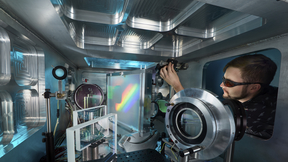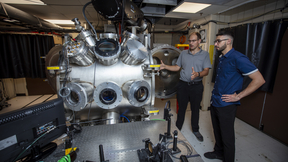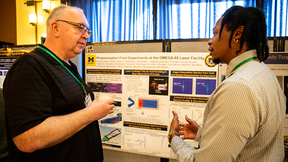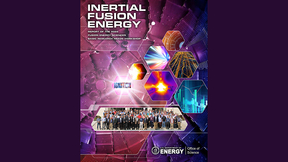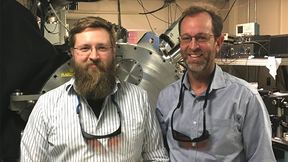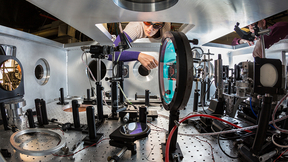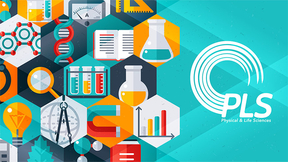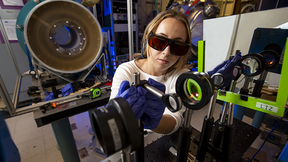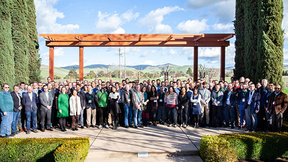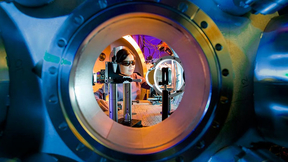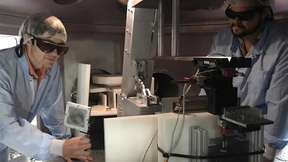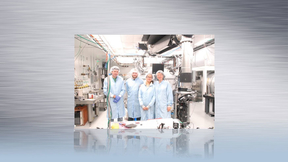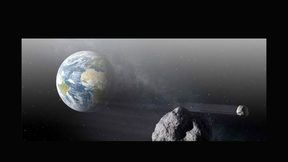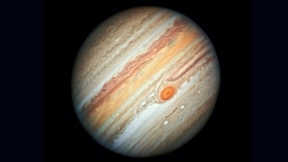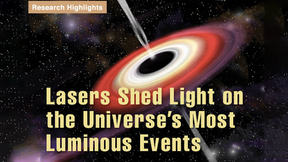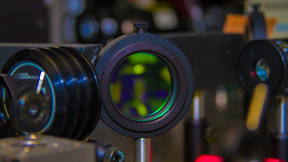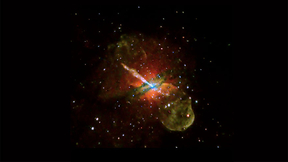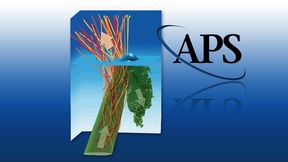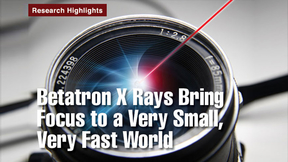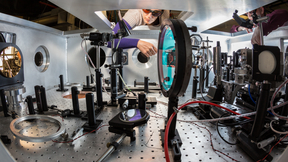Back
The Department of Energy’s Office of Science recently announced $28.5 million for LaserNetUS to advance discovery science and inertial fusion energy. Lawrence Livermore National Laboratory (LLNL) is one of nine facilities operating high-intensity, ultrafast lasers that will receive additional funding. LaserNetUS is North America's high intensity laser research network…
This summer, Danny Attiyah, a third-year Ph.D. student at the University of California, Irvine, will develop theory, create simulations and put those simulations to the test in a long experimental run. “I’m excited to go from theory to experimental results during my internship,” he said. Attiyah, who grew up in Southern California, was drawn to math as a student. But when…
Attendees at this year’s National Ignition Facility (NIF) and Jupiter Laser Facility (JLF) User Groups Meeting celebrated Lawrence Livermore National Laboratory's (LLNL) recent fusion ignition breakthrough at the National Ignition Facility, but also kept their focus on looking ahead to a bright future of high energy density (HED) science research. The forward-thinking…
Lawrence Livermore National Laboratory (LLNL)’s historic achievement of fusion ignition Dec. 5 at the National Ignition Facility (NIF) positions the United States with a “unique opportunity” to further lead the world scientific community’s pursuit of developing fusion as a future source of clean energy, according to a newly released report. Capitalizing on that opportunity…
Lawrence Livermore National Laboratory (LLNL) scientists recently published the results of a three-week experimental campaign at the Lab’s Jupiter Laser Facility to test the performance of laser-heated additive manufactured foams. The project helps support two major Laboratory focus areas, including helping to advance additive manufacturing and by enabling improvements in…
LaserNetUS, a network of facilities operating ultra-powerful lasers including those at Lawrence Livermore National Laboratory (LLNL), has received $18 million from the Department of Energy (DOE) for user support. Established in 2018 by DOE, LaserNetUS is organized and funded by DOE’s Office of Fusion Energy Sciences (FES). The new network was created to provide vastly…
At the recent 2020 NIF and Jupiter Laser Facility (JLF) User Group meeting, we ask attendees to tell us why the annual conference is important for their work and for the exciting future of high energy density science.
In high school, Liz Grace thought physics was boring and instead considered studying psychology or music. But then a college professor inspired Grace to see the wonders of physics. Today, as a National Ignition Facility (NIF) & Photon Science Summer Scholar, she’s helping to design and build a diagnostic instrument that could become a revolutionary measurement tool for…
The annual National Ignition Facility (NIF) and Jupiter Laser Facility (JLF) User Group meeting brought together more than 180 researchers to learn about the capabilities, recent experiments and new experimental platforms of both Lawrence Livermore National Laboratory (LLNL) facilities. The attendees included 61 students and represented 31 institutions across six countries…
The Department of Energy deemed Lawrence Livermore National Laboratory (LLNL) as one of nine facilities operating high-intensity, ultrafast lasers. DOE’s Office of Fusion Energy Sciences (FES) within the Office of Science awarded the new research network, called LaserNetUS, $6.8 million over the next two years. LaserNetUS includes the most powerful lasers in the United…
A group of NIF & Photon Science summer scholars and visiting graduate students are experiencing the value of teamwork as they conduct experiments at LLNL’s Jupiter Laser Facility (JLF). Jesus Hinojosa, 26, a University of Michigan graduate student, and Matthew Thibodeau, 21, a Rice University undergraduate, joined a team of veteran scientists and researchers to explore…
Thermal conductivity is one of the most crucial physical properties of matter when it comes to understanding heat transport, hydrodynamic evolution and energy balance in systems ranging from astrophysical objects to fusion plasmas. In the warm dense matter (WDM) regime, experimental data are very rare, so many theoretical models remain untested. But LLNL researchers have…
Defending Earth against incoming asteroids—uncommon but potentially catastrophic threats—is no easy task. Without convenient, cost-effective ways to experiment directly on asteroids in the solar system, scientists run simulations and conduct high-energy-density experiments on asteroid fragments with lasers. Those who need to study matter under extreme conditions find a…
Hydrogen is the most abundant element found in the universe, making up nearly three-quarters of all matter. Despite its prevalence, questions about the element remain.In a new paper published today by Nature Communications, a team of researchers, including scientists from Lawrence Livermore National Laboratory (LLNL), aims to answer one of those questions – what happens to…
In the 1960s, while hunting for illicit nuclear explosions with gamma-ray-detecting satellites, scientists first spotted flashes of high-energy gamma rays originating deep in space. These flashes are produced by gamma-ray bursts (GRBs), which are known to be the universe’s most luminous electromagnetic events.
Laser wakefield acceleration, a process where electron acceleration is driven by high-powered lasers, is well-known for being able to produce high-energy beams of electrons in tabletop-scale distances. However, in recent experiments, a team of scientists from Lawrence Livermore National Laboratory (LLNL) and the University of California, Los Angeles (UCLA) revealed new,…
Using ever more energetic lasers, Lawrence Livermore researchers have produced a record high number of electron-positron pairs, opening exciting opportunities to study extreme astrophysical processes, such as black holes and gamma-ray bursts.By performing experiments using three laser systems — Titan at Lawrence Livermore, Omega-EP at the Laboratory for Laser Energetics …
Research from the Lab'sFrederic Perez, Andreas Kemp, Laurent Divol, Cliff Chen and Prav Patel is featured on the cover of the Dec. 13 2013 issue of Physical Review Letters. For several decades, physicists have used lasers of very high power, such as at LLNL's Jupiter Laser Facility, to create extreme states of matter. By focusing such lasers to a beam as narrow as a few…
A Livermore team led by Félicie Albert, along with researchers from the University of California at Los Angeles (UCLA) and SLAC National Accelerator Laboratory, has produced x-ray pulses with all the characteristics users desire, with the added benefit of being generated on a system the size of a large tabletop.
A Lawrence Livermore team, along with researchers from the University of California at Los Angeles and SLAC National Accelerator Laboratory, has recently produced some of the highest energy betatron X-rays ever demonstrated, with the added benefit of being produced on a system the size of a large tabletop. Betatron X-ray radiation, produced when relativistic electrons are…

